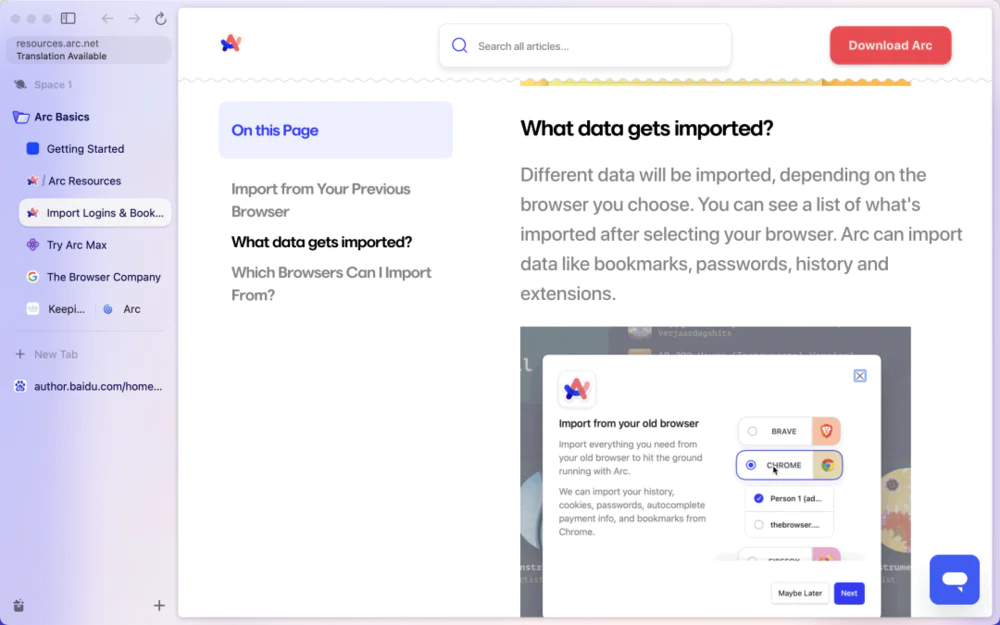User targeting is a critical part of a product manager’s role. But how exactly do we do it right? In this article, I’ll provide an overview of the importance, function, and methods of user targeting from a product manager’s perspective. Hopefully, this will offer some insights for you.
As someone who has spent nearly a decade in the product management field, moving step by step from a product assistant to a product director, I’ve maintained a philosophy of never working overtime and refusing workplace manipulation (PUA), while “diligently” working at my job—oops, I meant diligently working on every product I’ve handled.

I’ve led purely B2B products, purely B2C products, and also B2C platform-type products and IaaS/PaaS-type products. Some of these products have exceeded one million registered users, with hundreds of thousands of monthly active users, while others have struggled to survive. I’ve encountered countless pitfalls, some of my own making, some dug by others, and some from within the team itself.
I’ve experienced fierce market battles and the joy and pride of breaking records. In my younger days, I would fiercely defend the company, the team, and the leadership, taking on a product owner’s mindset. I argued with development teams, operations teams, and customer service. I’ve also faced helplessness during times of uncertainty.
Looking back on how I shifted from “fiercely passionate” to “barely hanging on,” I’ve learned the true importance of perseverance and methodology. Whether it’s arrogance or burnout, neither does justice to the hard work I’ve put in or my “grand” dreams. After all, when I chose product management, I dreamt of becoming as “great” as Steve Jobs—haha! Sorry for my inflated ego.
That’s why today I’m writing this article, hoping to help fellow product managers do better in their roles and honor the effort we all put into our work.
1. What is User Targeting?
User targeting is quite simple. In one sentence: “It’s the target audience for the product” or “the group of users that the product is designed for.”
1.1 The Importance of User Targeting
What role does user targeting play? Let me give you an example:
Imagine I have a bottle of mineral water. If I wanted to sell this bottle of water for $100, would you think it’s possible?
Probably not, right? The manufacturer’s suggested retail price for this bottle of water is around 2 RMB, which is common knowledge.
Now, if you target regular town residents as your audience, do you think anyone would spend $100 on it? Probably not.
But if you target someone dying of thirst in the desert, do you think they’d be willing to spend $100 to save their life? The answer is pretty clear.
Of course, this scenario is extreme and rare, but it highlights the significant difference user targeting can make for the same product. Therefore, the success of product positioning largely depends on whether user targeting is accurate and appropriate.
1.2 The Relationship Between User Targeting and a Product Manager’s Core Value
Regarding the core value of a product manager, you’ve probably read many articles or heard lectures about various frameworks, tools, and skills. Today, I want to focus on the relationship between user targeting and the core value of a product manager.
Before we address this, let’s understand the impact of user targeting on product design and development.
1.3 The Impact of User Targeting
When a project is in its early stages (business model validation), selecting a specific customer type as the “target user” and designing the product around their characteristics will yield better short-term results than not targeting any specific user group.
Some may argue, “Our project succeeded without locking in on a specific user group.” Yes, that can happen, just like winning the lottery is possible, but it’s not common. The user targeting example I gave with the mineral water highlights its importance.
Now, why must we do user targeting, and what are its effects?
1.3.1 Different Needs
Different user groups have different needs. For a product built to meet needs, understanding these needs is more important than anything else.
A good product continuously explores the usage scenarios of its target users, from scene-based to business-based needs, ensuring it remains competitive in the market. Sufficient market competitiveness is the core guarantee for the product’s long-term development.
For instance, if you’re targeting beginner users, their needs may be more about learning how to use the platform or how to make money from it.
However, if you’re targeting professional users, their needs may focus more on data security, expanding profitability, and managing multiple roles.
1.3.2 Different Feature Settings
Based on the characteristics of different user groups—age, culture, experience, and lifestyle—preferences for the same feature can vary. As the saying goes, “It takes all kinds to make a world.” If a product aims to attract more users, aligning with their habits and behaviors is key.
For example, if your target is beginners, the design of all features should be simple, intuitive, and easy to use. There’s no need for overly technical features; basic operations to achieve specific goals are enough. This is why WYSIWYG (What You See Is What You Get) designs are so popular.
If you’re targeting general users, they are likely to have come from other products. In this case, your features should resemble those of industry leaders, maintaining familiar user habits and design language to prevent users from abandoning your product after a few uses due to unfamiliarity.
1.3.3 Different Product Focuses
Typically, different user groups have different product focuses. Beginner users care more about being taught how to do things and how to earn money. Professional users, on the other hand, care more about whether the software keeps up with their business needs.
1.3.4 Different User Education Costs
Beginner users, having little or no experience with similar software, require a complete and reliable manual or intuitive design. A brief training or guide can quickly get them accustomed to the software.
Professional users, however, already possess knowledge of similar software. Thus, manuals are less necessary. They also have developed “muscle memory” in their usage habits, meaning any deviation from those habits in your software can create resistance.
1.3.5 Different User Acquisition Costs
When targeting beginners, anyone could be a potential user, so casting a wide net is essential. Quantity over quality becomes the priority.
For professional users, precision targeting is key due to their smaller, harder-to-reach numbers, making quality over quantity essential.
In conclusion, user targeting is critical to product design, operation, promotion, and service. Many teams or companies fail not due to lack of skill or effort but because of improper user targeting.
In short, accurate and proper user targeting is crucial for a project’s success. So, how do we achieve precise user targeting in practice? Stay tuned for the next part!
2. The Core Value of a Product Manager
In reality, identifying user positioning is often not something product managers need to do themselves. In most cases, it is determined by the top executives of the company (except in large corporations).
Generally, company executives or higher-ups are industry insiders who, based on their years of experience, undoubtedly have a deeper understanding of customers than we do. Many product managers, and even the executives themselves, believe this.
However, my years of experience have taught me that while this is true, it’s not entirely accurate. Why?
Because of their circles, bosses typically interact with other bosses or industry leaders and seldom engage with various segmented customer groups. Products designed solely based on their vision often encounter "issues"—sometimes severe enough that the product never launches, leading the company to bankruptcy due to a lack of funding.
Thus, regardless of how well your boss understands the market and the industry, as a product owner, you must conduct thorough market research and proper user positioning to provide factual and theoretical support to safeguard your team, your boss, and yourself from the aforementioned pitfalls. After all, your boss’s experience is theirs, and even if they share it with you, you won’t fully "relate" to it until you experience it firsthand.
Once you have determined your target users through market research, competitive analysis, and other methods, you must further categorize them into primary, secondary, and tertiary users. Then, you need to present a detailed report to your team and leadership, helping them fully understand the market and the competitive landscape so they can make the best decisions.
Now comes the crucial part! At this stage, many team members might start making decisions impulsively. This is the time to seize the opportunity and present your views based on objective facts. Don’t fear criticism or misunderstandings from leadership. It’s crucial to present your insights and ideas with objectivity and data support. Because if a wrong decision is made at this point, it could result in wasted effort and uncertain future outcomes. This is where the core value of the product manager shines. Everyone should "act within their abilities and know when to stop," but be sure not to let emotions cloud your judgment, as emotional outbursts could lead to unnecessary consequences.
Many product managers, especially those who haven’t experienced the journey from 0 to 1, might feel they can’t demonstrate their value in this phase. But that’s not the case! Once the product is launched, it will go through various stages, including no users, few users, acquiring users, and losing users. The primary reason for user loss is often tied to user positioning. If your product meets user needs and those needs aren’t one-time, but users are still leaving, it’s likely due to improper user positioning or the failure to adjust positioning in a timely manner. Therefore, regularly understanding and revising user positioning is essential for experiencing the core value of a product manager. After all, who would want to abandon a product that is both useful and needed?
Now that we’ve discussed the importance of user positioning for product managers, how should we, as product people, do it well?
Here, I’d like to share some methods I often use. I hope these can inspire your thinking and help you navigate through the "river without stones."
3.User Positioning Methods
Consult the Product Leader
In most cases, the target customer group is not determined through research but is envisioned or specified by the boss or leader. For instance, the boss might say, "We’re planning to create an XXX product, targeting XX industry customers. We want to…" And then the team starts working on development (Oops, went off-topic).
Market Research
Use quantitative or qualitative research, paid surveys, and other methods to gather real user groups.
Competitor Analysis
Use search engines like Baidu, Google, Bing, or other channels to find competitors. Analyze their features one by one, understand what their core functions are, and reverse-engineer their design choices to figure out which customers they are targeting.
Data Analysis
This method applies to paid surveys and launched products. By using data collection points or paid surveys, you can gather user data and thus identify the real customer groups.
User Feedback
For launched products, you can gather user feedback through feedback channels or customer service follow-ups. This helps identify which users are genuine and their proportion within the overall user base, thereby fine-tuning user positioning.
User Simulation
You can play the role of the target user and explore various forums, websites, groups, and online communities to understand the market. For example, you can discover which products in the industry are the most useful, the most popular, have the broadest ecosystem, and offer the best services.
Other Methods
Besides the above methods, there are other "unconventional" approaches, such as random surveys, prize-based Q&A, or insights from industry experts.







